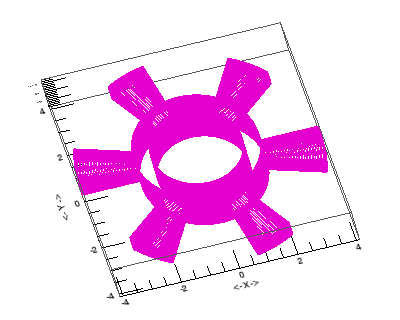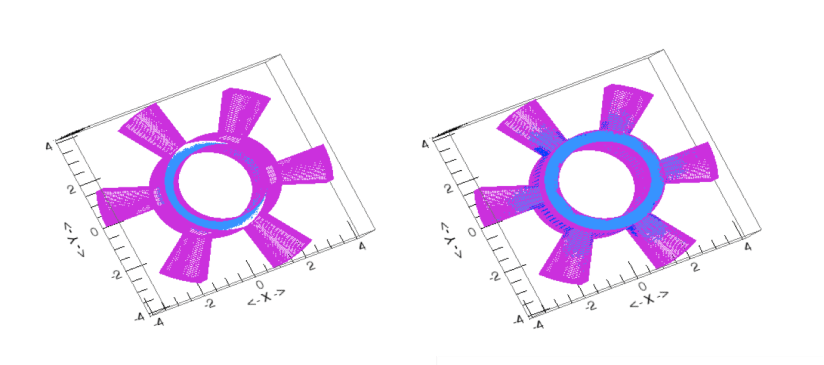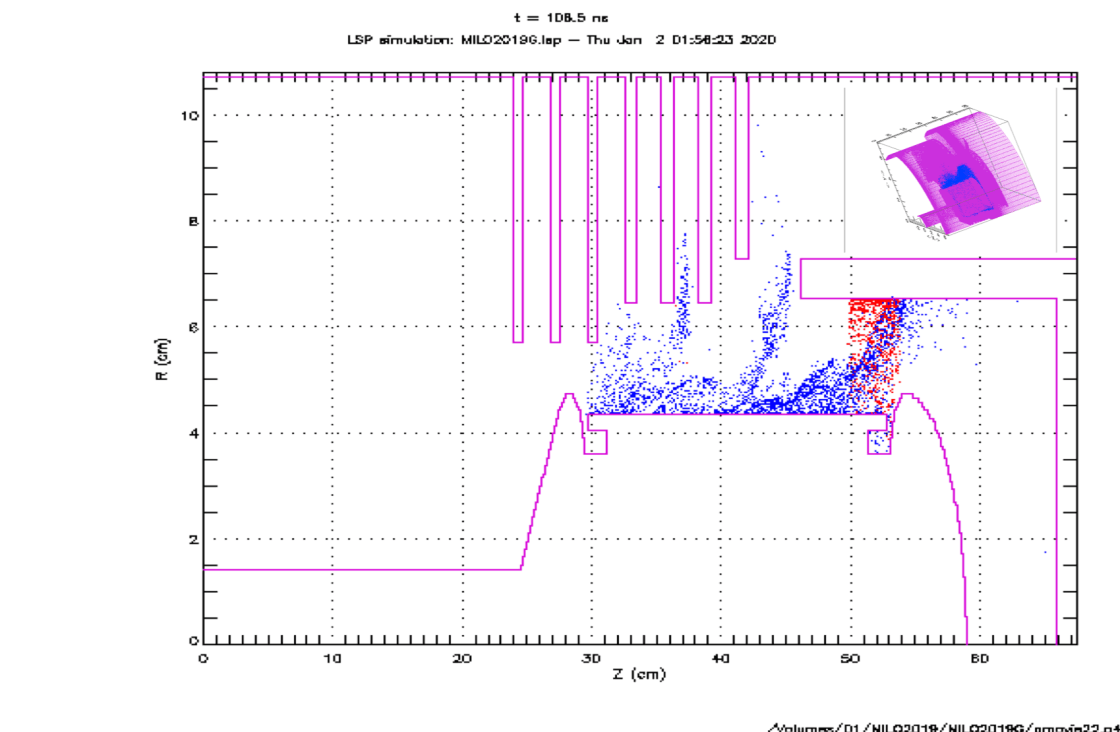
Concept to Model
Our PIC models are well validated and robust and allow us to design in numerical space. This also allows us to work on any variation prior to fabrication. For example we can turn on/off ion emission in different regions on command. Top inset is in 3d sim space.
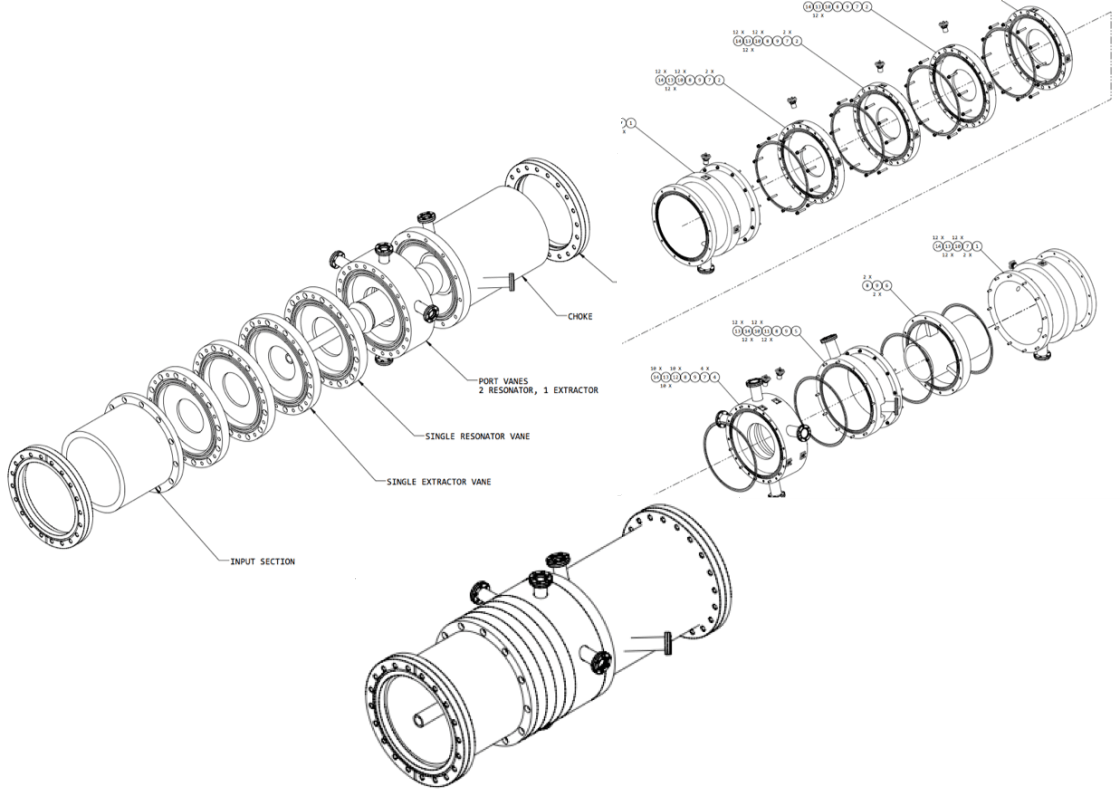
We have designed a Modular HPM source.
This is a test bed for new technologies. From Cathode development to desorbate reduction. It is replete with axial and azimuthal diagnostics- Electrical (current), spectroscopic, interferometric and X-ray. All are spatially and temporally resolved.
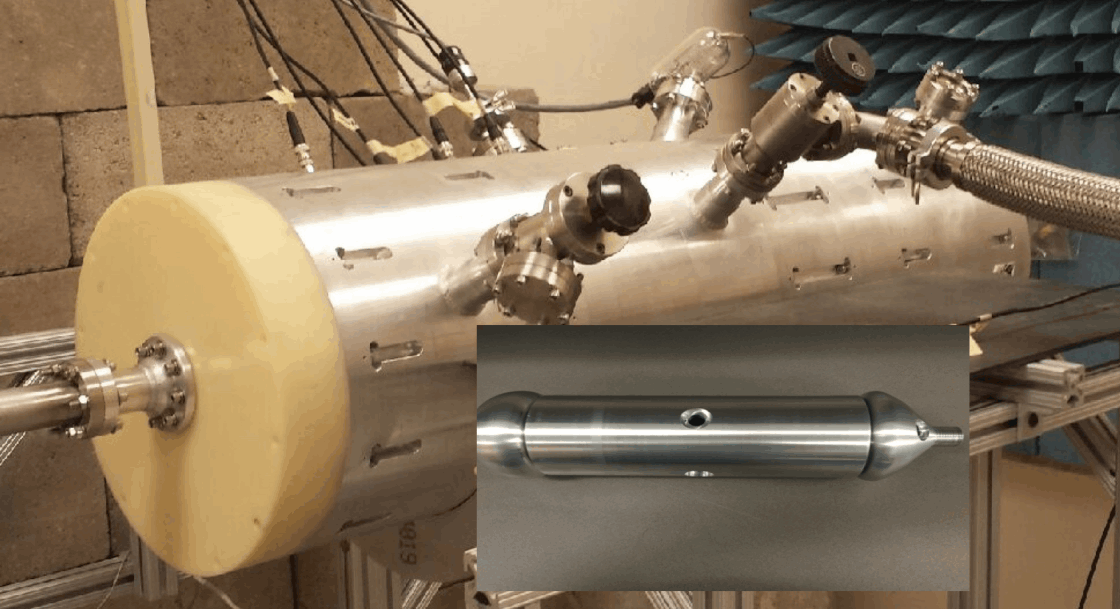
We have built an HPM Source
A modular device that can accomodate internal as well as external changes and is replete with a full suite of plasma diagnostics, axial and azimuthal to yield improvements in the performance of the device. Inset is the inner conductor showing apertures for current, voltage and ion measurements.
Will be mated to Transmission Line and Marx generator. Results coming soon
